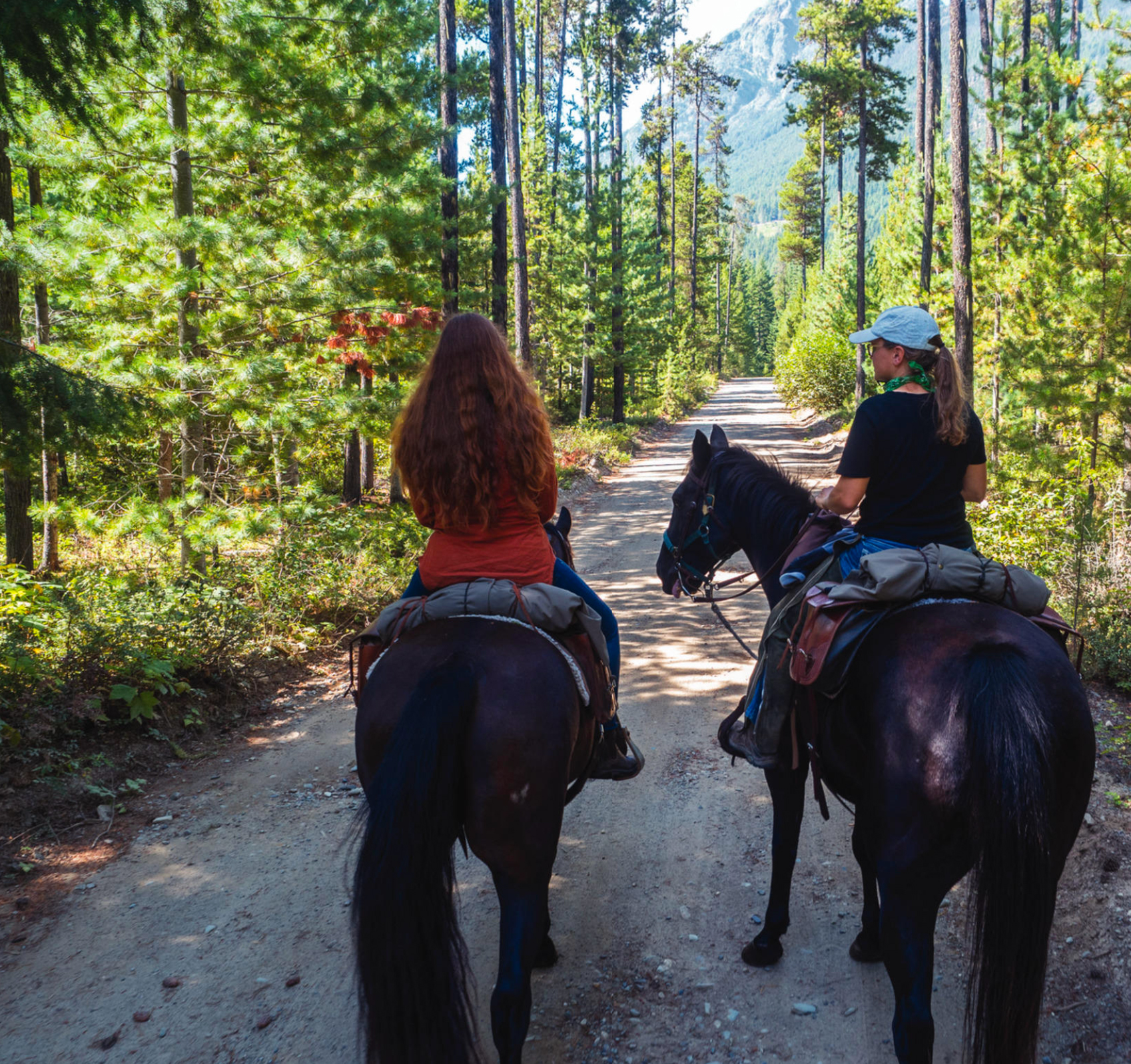As we rounded the bend, the vista opened up. Our guide pointed out peaks with names like Sun God, Tolkien and Sockeye Horn. Even though my daughter Maia and I had just driven up from Vancouver a couple of hours earlier—we were already deep into the unceded territory of the Lil’wat Nation. It felt like we were as removed from the city as we could get.

Squeezing gently with my legs—my horse continued up the steep trail. Sure-footed, cheeky and cheerful, there was something different about Rocky. My mount from Copper Cayuse Outfitters (CCO) was climbing the mountains in the Birkenhead Lake backcountry like he was born to do it. It turns out this is because he was. Culled from the Lil’wat wild herd, and lovingly raised for trail riding, Rocky started his life in the mountains. It was clear from the jovial way he tromped his way up and down the ridges, stopping for the occasional tasty mouthful of wild grasses—he was happy out here.
Current counts say as many as 1,000 horses, or cayuse, are running free across the Chilcotin region (which includes Lil’wat territory). This is significantly fewer than the tens of thousands that once lived in the interior grasslands of BC, according to biologist and horse researcher Wayne McCrory in a 2019 interview with the Vancouver Sun. Harsh winters, heavy snow, habitat loss, wildlife interactions and government-sponsored culls have taken their toll on the wild herds. And on the nations who care for them.
“We have a good relationship with the Lil’wat people,” CCO co-owner, Don Coggins tells me. Much of the CCO herd came from the local wild herd that roams freely between Pemberton and Lillooet. Considered feral pests in parts of BC, wild horses don’t have the same rights as other local wildlife and are often subject to illness and injury, or become the target of complaints.
But Coggins says he saw something else in the animals, “Because they’re local, they’ve evolved to thrive in this environment.” He and his partner saw potential in training them to become trail horses, “We gentle them—we don’t break them.”
The CCO horses stay wild until their mothers wean them off milk. But then, when winter comes, they need to start competing with the rest of the herd for enough food. This is when Coggins and his team start to work with the herd manager to find suitable colts. They look for mellow, cheerful, sure-footed horses that seem like they might be inclined toward hanging out with humans. Next comes about two trust-building years, working to get a colt to where they can even be lightly ridden. Then, Coggins says, comes, “haltering, ground work and eventually saddling and the acceptance of having people on their backs.”
As someone who has ridden a lot of different horses in a lot of different places, but doesn’t actually know a ton, I did recognize something special about my mount. Trail riding can be a bit of a nose-to-tail experience, where you feel like you’re a passenger along for the ride. But Rocky had his own quirky personality and seemed happy to team up with me. As we made our way through open grassland, up and down steep hills and then through a rushing river I discovered what it feels like when you form a trusting partnership with a horse.
Part of this could be because the Lil’wat horses are especially calm and sturdy. This may be because a 2015 DNA study showed something unique about them. While it’s possible that some of BC’s wild horses, which records show preceded early European settlers, were descendants of those introduced by the Spanish in the early 1500s, the isolated Chilcotin horses that were tested showed different DNA. Their tests indicate they’ve descended from the Canadian horse, a rare old breed prized for its stamina and size, and the rare Yakut horse from Russia’s eastern Siberia, which thrives in cold weather.
Whether these surprising findings extend to the Lil’wat herds still isn’t known. And what the findings mean to how the horses actually ended up in the Chilcotin is a mystery. What we do know is the horses have adapted to their rugged landscape and have become woven into the region’s history and landscape.
As we continued our surefooted way up twisting trails with peak-a-boo views, our guide told us that some of the trails we were riding harkened back to the gold rush era. Back then, miners and their loaded local horses wore a network of compacted trails into the mountains—these remnants are so obvious that modern guides are always on the lookout for them.
For me, this unique history was a cool bonus. The goal had been to spend a nice day with my daughter—sharing a ride through the mountainous landscape. I got that—but I also got a deeper understanding of the place I love, thanks to a horse called Rocky whose heritage is carved into the hills.
COVID-19 Protocols
Check COVID-19 regulations, including reduced services and reduced capacities for businesses, before you visit.

